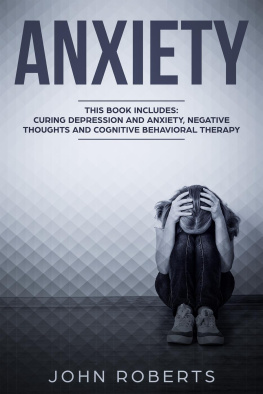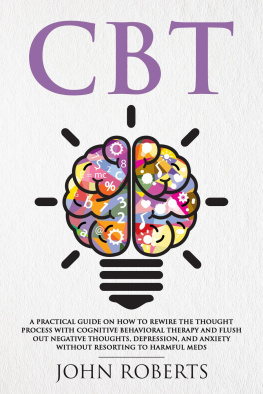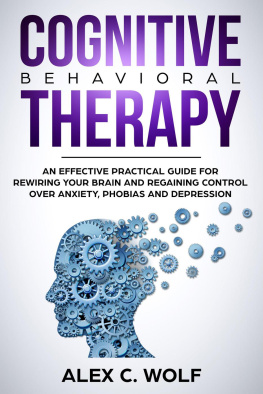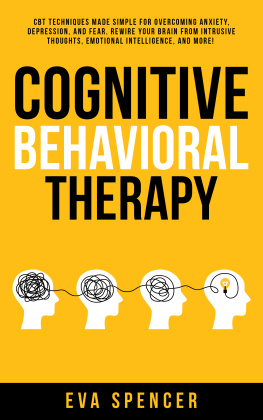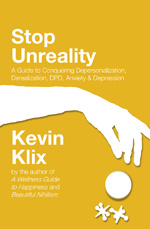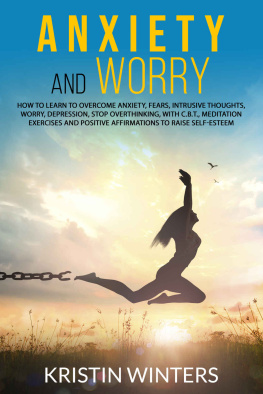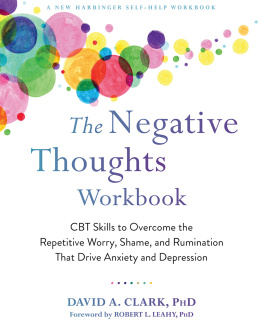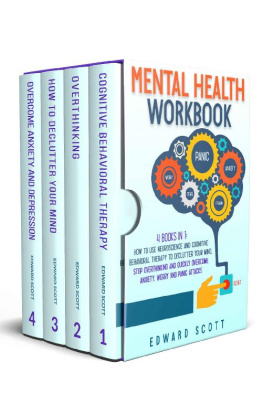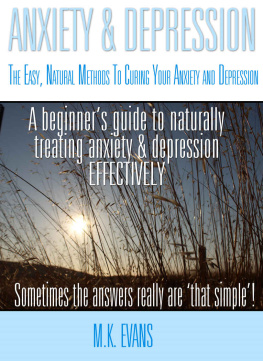Depression and Anxiety
A Practical Guide on How to Cure Depression and Anxiety Without Resorting to Harmful Meds
P eople that have suffered from depression, anxiety, or constant negative thoughts, know how difficult it can be to break this vicious, apparently never-ending cycle. The majority of sufferers from these illnesses usually end up taking medications that can have very drastic negative consequences over the short or long-term.
Research demonstrates that over 90% of the things that people with mood disorders such as depression are actually negative and self-destructive. This negative self-discussion eventually prospects to a self-fulfilling prophecy - what were constantly repeating in our brains eventually creates a damaging mindset that ends up making our recurrent self-talk a reality. Negative thoughts boost your levels of unhappiness and can ultimately damage your quality of life. It can eventually lead you to an unhealthy and self-destructive path.
This book contains proven steps and strategies on how to treat your symptoms of depression and anxiety and help you stay away from medication that could end up harming your quality of life.
Thanks for downloading this book, I hope you enjoy it!
Copyright 2017 by John Roberts - All rights reserved.
This document is geared towards providing exact and reliable information in regards to the topic and issue covered. The publication is sold with the idea that the publisher is not required to render accounting, officially permitted, or otherwise, qualified services. If advice is necessary, legal or professional, a practiced individual in the profession should be ordered.
- From a Declaration of Principles which was accepted and approved equally by a Committee of the American Bar Association and a Committee of Publishers and Associations.
In no way is it legal to reproduce, duplicate, or transmit any part of this document in either electronic means or in printed format. Recording of this publication is strictly prohibited and any storage of this document is not allowed unless with written permission from the publisher. All rights reserved.
The information provided herein is stated to be truthful and consistent, in that any liability, in terms of inattention or otherwise, by any usage or abuse of any policies, processes, or directions contained within is the solitary and utter responsibility of the recipient reader. Under no circumstances will any legal responsibility or blame be held against the publisher for any reparation, damages, or monetary loss due to the information herein, either directly or indirectly.
Respective authors own all copyrights not held by the publisher.
The information herein is offered for informational purposes solely, and is universal as so. The presentation of the information is without contract or any type of guarantee assurance.
The trademarks that are used are without any consent, and the publication of the trademark is without permission or backing by the trademark owner. All trademarks and brands within this book are for clarifying purposes only and are the owned by the owners themselves, not affiliated with this document.
Chapter 1 Easy Lifestyle Changes for Living Depression- and Anxiety-Free
R efusing to rely on medications to treat depression and anxiety is possible with the help of the following healthy lifestyle changes.
1. Physical activity
Making sure your body stays physically active helps a lot in driving the depression and anxiety blues away. You dont necessarily have to sign up for a gym membership. To be physically active means something as simple as tending your backyard garden or walking to the grocery store. It helps to remember that starting slowly would be sound for people who have not had regular physical activity for some time. When you feel that your bodys fitness level has improves, you can gradually increase the time and intensity of your physical activity routines.
But why is physical activity one of the most important lifestyle changes you can make to combat depression and anxiety? Apart from helping you reduce your risk of disease, live longer, lose weight, improve your appearance, and achieve the level of fitness you want your body to have, physical activity also helps you enjoy better sleep, experience less stress, have a sense of value and purpose, and gain more social connections, all of which contribute to reduced feelings of depression and anxiety.
To make sure you get the most of your physical activity, fitness experts recommend that you get a minimum of two hours and thirty minutes of brisk walking or other forms of moderately intense physical activity per week, or one hour and fifteen minutes of jogging, swimming laps, or other forms of vigorously intense physical activity. You may even combine the two recommendations to suit your fitness needs.
Other tips for making physical activity part of your lifestyle include:
- Choose physical activities that you actually enjoy doing.
- Get your body moving in a natural way. Research has shown that certain characteristics are shared by individuals who live over one hundred years, including setting up their lives in such a way that physical activity was a fixture in their day-to-day routine. These people get their exercise by tending the garden, taking walks, doing household chores, and climbing stairs, instead of lifting weights or going to the gym.
- Set aside a minimum of ten minutes of movement at a time. Individuals who perform any physical activity in short bursts that last for ten minutes each have shown that they can actually be as healthy as those individuals who clock in thirty minutes worth of regular workout on a daily basis.
- See to it that you are doing a minimum of two hours and thirty minutes of aerobic physical activity at moderate intensity in a week, which amounts to about thirty minutes daily. To achieve this, you can try brisk walking, general gardening, water aerobics, and ballroom dancing. Know that you will reap greater benefits when you go over these recommendations.
- Sneak in some flexibility and strengthening exercises to your workouts. You can also try adding sit-ups, push-ups, weight training, heavy gardening, carrying of heavy loads, and other activities that serve to strengthen the muscles; do them at a minimum of two days per week. Fitness experts also suggest including flexibility exercises, like stretching, that help you avoid injuries, reduce your risk of falls, and improve your balance.
If you are one of those people who already have an established exercise routine, just keep on doing your exercises. Otherwise, let these getting-started tips help you along:
- Think 5 times 30: Walk, jog, dance, or bike 3 to 5 times per week for thirty minutes.
Next page
